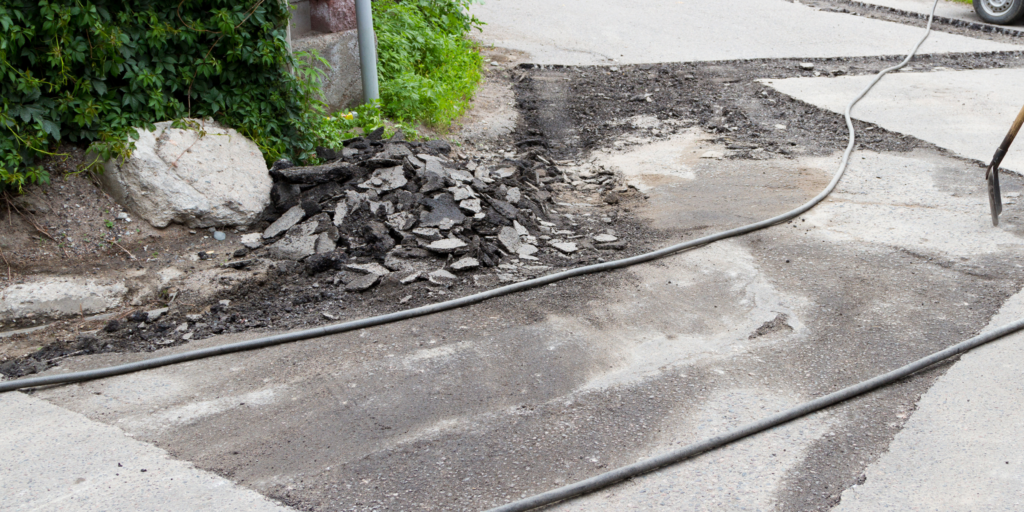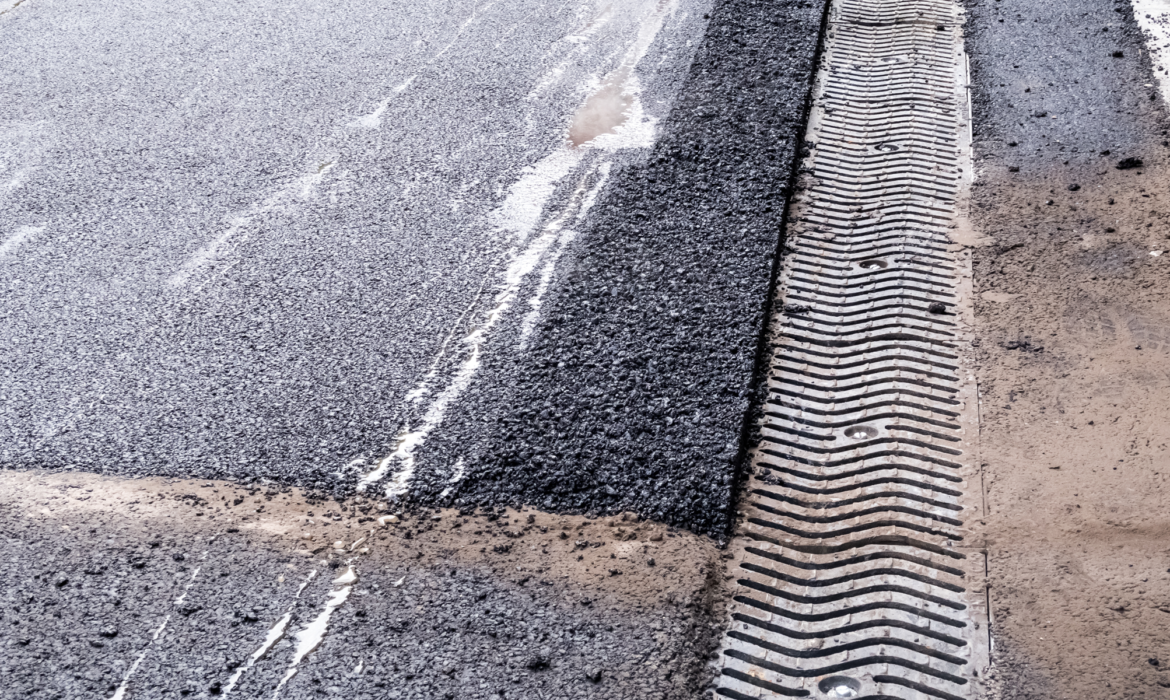The durability and functioning of pavement are closely related to selecting the optimal treatment method. Before you go for asphalt overlay or full replacement, understand the differences as well as the advantages and disadvantages. This write-up will be about asphalt overlay and complete replacement, their pros and cons, their costs, how to assess pavement conditions, and how to select a contractor.
Understanding the Differences Between Asphalt Overlay and Complete Replacement
Overlay with asphalt entails adding asphalt onto an already existing pavement surface. Washing the pavement, filling the cracks and potholes, and then covering the new asphalt are the processes involved in this project. While this eliminates all pavement, it is not a sustainable solution. The digging and grading of the subbase are followed by compaction before the asphalt can be laid.

What is more, the asphalt overlay adds a layer only, hence utilizing less asphalt than the complete replacement. The whole pavement is replaced, which means that more asphalt is used to make it. On the other hand, total replacement may be associated with the use of geotextile fabric or aggregate base to enhance the stability and durability of the repaired area.
Factors to Consider When Choosing Between Asphalt Overlay and Complete Replacement
Among the factors that are considered during the decision-making process as to whether asphalt overlay or replacement should be done are the following. Whether the method to use will be an overlay or a reconstruction depends on the age of the pavement and its condition. A resurfacing technique, including the application of an overlay, may be sufficient to return the appearance and functionality of new, lightly damaged pavement to its original condition. Additionally, over time, the pavement’s durability may need total removal of the pavement that is in very bad condition, with large cracks and potholes.
Traffic volume and capacity are also noteworthy factors. If the pathway is heavily used or trafficked, the entire replacement can be helpful because it is stronger and more durable. In the case when traffic flow is light, and the pavement is not too heavily loaded, an overlay may prove to be a cost-effective means of repair.
When planning a construction project, one must be mindful of the budget and the time frame. The fact that asphalt overlay is cheaper than full replacement because it requires less material and labor is the reason that it is used. It also completes the paving process faster and, consequently, provides you with faster pavement access. In case the budget is not an issue and time is at hand, replacement is recommended for its long life and higher performance.
There should be environmental factors in mind. The recycling of pavement materials used during asphalt overlay increases the sustainability of the project. It requires less energy and materials than when the whole thing is being replaced. In the event that the pavement is composed of toxic substances or has serious environmental problems, complete reconstruction will be required for pollution removal.
Asphalt Overlay Pros and Cons
Asphalt overlay, an increasingly popular pavement restoration alternative, is characterized by its advantages. The main advantage is the fact that it is a cost-effective approach. This is because it will be cheaper than total replacement, and therefore, it can save money for the project. The overlay of asphalt does not require any excavation or removal of any pavement, which, in turn, leads to less disruption. Companies and property owners will be able to resume their normal activities without major difficulties. The overlay finish of asphalt is faster than the total replacement; therefore, the pavement will be open for traffic sooner.
Asphalt overlay has downsides. The disadvantage of the lower lifetime of the hybrid is the fact that it is one of the reasons for its replacement by a full replacement. In fact, overlays can significantly extend the life of pavements for up to several years, but they may not be applicable to pavements that are severely damaged. The decking merely makes the surface look better, but it does not fix drainage or subbase problems, which could be the cause of the performance of the pavement.
Benefits and Drawbacks of Complete Asphalt Replacement
Asphalt total replacement is recommended for pavements that have already experienced significant deterioration or require huge renovations. The other remarkable feature is its durability. Complete replacement all the way substitutes the pavement and gives birth to a more long-lasting and functional surface. It also deals with the draining and subbase troubles to create a good foundation for the new pavement.
Cost Comparison between Asphalt Overlay and Complete Replacement
Asphalt overlay and replacement costs are also influenced by different factors. Factors related to the project size, type of pavement, and local market can influence its cost. Asphalt overlay is cheaper compared to complete replacement projects due to the lower cost of materials and labor. A topcoat can be less costly initially but may need more maintenance and re-coating down the road.
How to Determine the Condition of Your Pavement for Asphalt Overlay or Replacement
Pavement condition assessment is a critical issue in making a decision on whether asphalt overlay or replacement should be applied. The damage, such as cracks, potholes, uneven surfaces, and improper drainage, suggests that there might be problems with the pavement. The cause for this could be an excessive overlay, which could only fix the small problems of the locality. Replacement may be required if the damage is severe or if there are any underlying problems like poor drainage or a bad subbase.

Visual inspection, core sampling, and nondestructive testing enable us to check the pavement. Visual inspection is about checking for cracks, potholes, and any other obvious damage. Core sampling involves the taking of small samples to measure pavement conditions and the thickness of the pavement. Radars and fall weight deflectometers help show the quality of pavement structural integrity.
Choosing the Right Contractor for Your Asphalt Overlay or Replacement Project
It is crucial to make sure that you hire the right contractor for the success of asphalt overlay or replacement. When hiring a contractor, try to ensure that they have experience, knowledge, and a reputation. An experienced pavement construction and maintenance contractor can be your best bet to handle such projects. Ask for references and browse their work to find out quality and customer feedback.
To seek clarity, ask questions multiple times prior to hiring the contractor. Such questions could, for example, concern licensing, insurance, project management, time frame, schedule, and warranty or guarantee agreements. Asking these questions beforehand will help you hire a contractor who can perform a good job within your budget and your schedule.
The age and condition of the pavement, traffic volume and usage, funding, time limit, and environmental issues must be taken into account when deciding on asphalt overlay or complete replacement. Asphalt overlay is inexpensive and quick but may not be suitable for effective rehabilitation of seriously damaged or underlying pavements. Complete replacement is an expensive and time-consuming option, but it lasts longer. Picking the correct approach necessitates conducting a visual inspection, coring, or nondestructive test of your pavement. Lastly, the most important part is selecting a contractor who is experienced, competent, and has a good reputation because it is the key to the success of the project.

